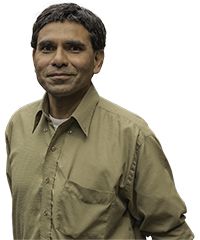Opinion
Mishra’s Mishmash: Will Mette Frederiksen succeed in transforming Denmark into the greenest country in the world?
Mrutyuanjai Mishra
This article is more than 4 years old.

Remember it’s delicate, so eat your daal (photo: Pixabay)
All eyes are on Glasgow. Visit any upper-secondary school in the middle of Copenhagen and they will all tell you about the ambitious green projects they have envisioned and are implementing. At Åbne Gymnasium, for example, they are utilising the terrace of the school to plant herbs.
Old firm meets new firm
Teachers are busy preparing their students to follow the events of the 2021 UN Climate Change Conference (COP26), which is scheduled to be held from November 1-12 in Glasgow. At least 100 world leaders are expected to attend the conference in person.
Unprecedented warm temperatures have been recorded over the summer in the USA and Canada. Forest fires are becoming common in southern Europe. And there is very little doubt left, if any, about the fatal effects of climate change. Virtually every single country has now signed the United Nations Framework Convention on Climate Change (UNFCCC), an international environmental treaty addressing climate change.
Hence, COP26 president-designate Alok Sharma is under pressure to produce tangible results in Glasgow. He happens to be a member of the Indian diaspora living in the UK, and he is surely watching closely the unfolding of the green strategic partnership between Denmark and India. Sharma said recently that “COP26 is our last best hope for the world to come together and tackle climate change.”
More convincing needed
Danish PM Mette Frederiksen confirmed in her speech at the opening session of Parliament on October 5 that she is going to visit India. She was scheduled to visit Delhi from October 9-11, and the Indian PM Narendra Modi would most likely reciprocate her gesture and visit Denmark – also for a short span of time.
Addressing Parliament, Frederiksen said that India has chosen Denmark as its most important strategic partner in finding green solutions. And it is true: India needs to cut its carbon emissions drastically, both to reduce air pollution and greenhouse gases in the atmosphere, and Denmark has the solutions.
Planting wind turbines to generate green energy along its beaches and shores will surely be one of the solutions India might choose. Reducing dependence on fossil fuel is an urgency in India. But India might also opt for nuclear power plants. So Frederiksen and her delegation will have to convince India that the Danish technology is reliable.
The meeting, which is due to take place right before the summit in Glasgow, will send a signal to the world that the richer countries need to share their technology to help developing countries fight climate change effectively.
Following India’s lead
It’s Interesting to note that the Danes have started to eat more plant-based food, which is actually the main diet of the majority of Indians, as the largest number of vegetarians in the world can be found there.
Frederiksen wants to reform Danish agricultural production to primarily focus on producing plant-based food. It is a sweet melody for the conservative adherents of the world’s oldest religion, Hinduism.
So while the Indians will soon be planting Danish wind turbines in the Indian Ocean, more Danes will start eating Indian vegetarian and vegan dishes like rice and daal.

About
Mrutyuanjai Mishra
As a regular contributor to the Times of India, the country’s largest newspaper, Mishra is often sought-after by Danish media and academia to provide expertise on Asian-related matters, human rights issues and democratisation. He has spent half his life in India and the other half in Denmark and Sweden.










































